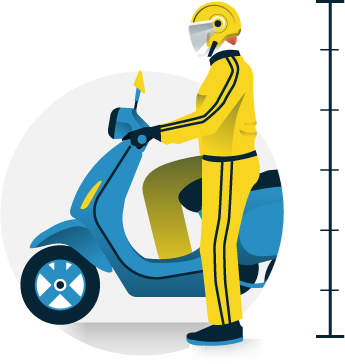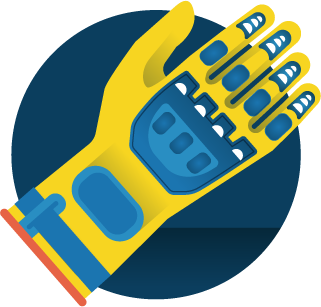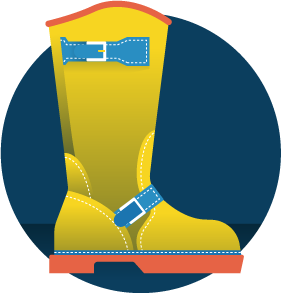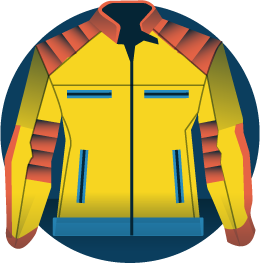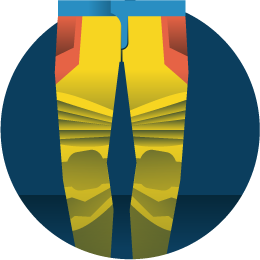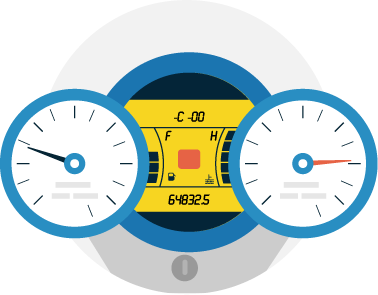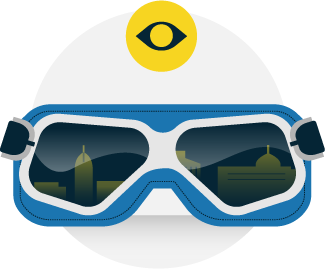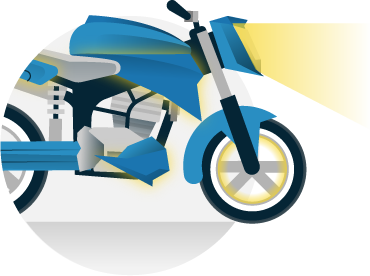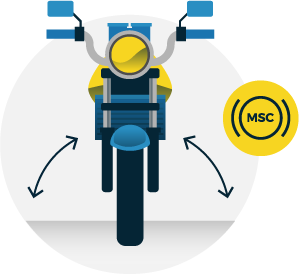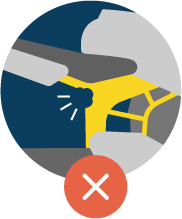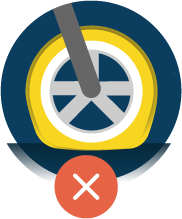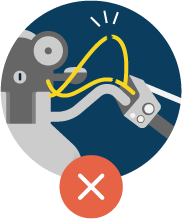Motorcyclesafety guide

According to the National Highway Traffic Safety Administration (NHTSA) in 2016, 5,286 people died in motorcycle crashes in the United States. This was a rise of over 5% from the previous year. By contrast, car deaths are continually falling due to increasing safety features in modern cars.
Because of motorcycle design, it is harder to introduce as many safety features as in cars. However, there are certain steps that motorcycle riders can take in order to make their experience safer for themselves and other road users.
Get the right motorcycle for you
Motorcycles often become more dangerous when they are beyond the capacity of their rider. Choosing the right motorbike for you will help you to manage it, and to be able to control it in dangerous situations.
-
Engine Size and Skills Levels
The most obvious problem that riders have – particularly new riders – is buying a motorcycle that is too big and too powerful for them. Although it is always tempting to buy the fastest motorcycle around, buying one that fits the journeys you take is the best solution. It is far better to start with one with an engine too small than one with an engine too big.
-
Height and Body Size
Along with the factor of comfort, one of the biggest safety aspects of a new motorcycle is whether you can reach all the pedals and controls easily, even at high speed. You should also be able to touch the ground when you stop the vehicle.
Type of Motorcycle
Choosing the right motorcycle involves choosing the right motorcycle for you. The most common choices all have clear strengths and weaknesses when it comes to driving, and this has a major impact on the safety of the vehicle. Read the following options to determine which type of motorcycle fits your purpose. An incorrectly selected motorbike is a dangerous option.
Cruiser
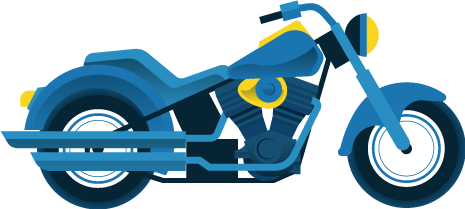
-
Longer-distance driving. These are comfortable for longer periods of time, making them a safer option for longer journeys.
-
These motorcycles typically have very few additional features, including limited storage.
Sport
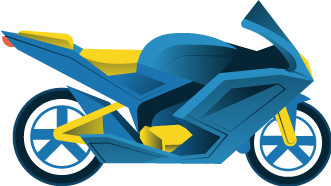
-
Speed. These bikes are designed to accelerate quickly and to maintain high driving speeds.
-
Not ideal for longer rides. Because of the driver’s position, as well as the design of the bikes, drivers may feel uncomfortable after a short amount of time. The acceleration also may not be useful on longer rides.
Touring
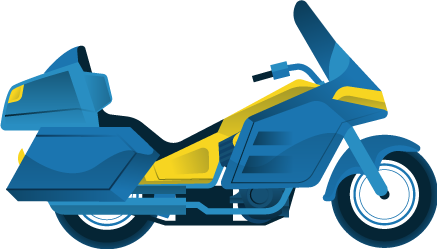
-
Touring motorcycles are also designed for long distance rides. They have large ride screens and fairings to keep the rider protected from the elements.
-
These motorcycles are often the heaviest available. Their relatively slow acceleration and bulk mean that they are not well designed for city traffic.
Standard
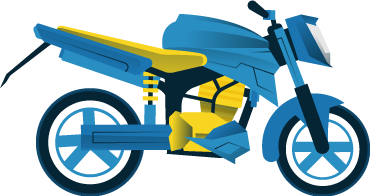
-
Standard motorcycles are a combination of all of the other options. They often have no ride screen or fairing.
-
The rider position is neutral, meaning that they can operate well in city or cross-country driving. However, they don’t excel in either.
Dual-Sport
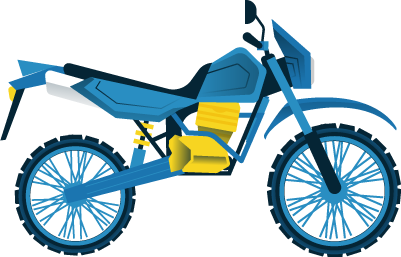
-
Dual-sport bikes are designed for use on the road as well as off-road. Their suspension is higher for off-roading, and riders are positioned upright.
-
These motorbikes are often not as fast as other forms of bikes. Because of the position of the rider, and the lack of support, they often aren’t optimal for city riding.

In general, therefore, no one model is inherently safer than another. However, the safety element is contingent on the skill of the rider and the conditions in which they are being ridden.
ATGATT
ATGATT is an acronym used within the motorcycle community. It stands for All the Gear, All the Time. This means that every time you get on the motorbike, you should be wearing all of your safety equipment. This is especially true for new riders, who are more likely to get into an accident. In that instance, safety gear can literally save your life. Use the following checklist as a bare minimum:

Helmet
This is not only the most important piece of safety equipment that you own, but it is also mandated by law in most states. The National Highway and Traffic Safety Administration (NHTSA) stated that 2,089 motorcycle deaths in 2016 would have been prevented had the rider been wearing a helmet. Choose a helmet with full face covering and which conforms to DOT regulations.
-
Gloves
Cold hands can make it harder to brake suddenly in an emergency, and bugs or pebbles hitting your bare hands may cause you to flinch – extremely dangerous when traveling at speed. A sturdy pair of gloves won’t just keep you warm: they will also help you in the event of a collision, providing wrist support and abrasion protection.
-
Boots
There is always the temptation with motorcycles to ride in hiking boots. However, the presence of long loose laces on hiking boots is, in itself, a hazard. Instead, you should buy a sturdy motorcycle boot. The key feature to look out for is ankle protection, as the ankles are the most commonly injured body part for motorcyclists. Look for abrasion support as well as rigid protection.
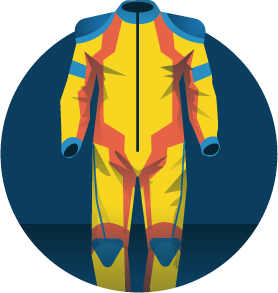
One-Piece Suit
The technology available now makes one-piece suits by far the safest clothing option when riding. You can buy Kevlar suits that provide extreme protection against impact, as well as suits that are designed to function in almost all climates. The key feature when it comes to these suits is fit. It should be tight enough to avoid being baggy, which is dangerous, and not too tight to be constricting, which is also dangerous. Try them on while sitting on a motorcycle to determine fit.
-
Jacket
A jacket is the second most important item of clothing to wear when riding. Like a helmet, it should fit snugly without being constricting. You should also tailor your jacket to the conditions you will be riding in. As a general rule, buy the thickest material available to you, as this will provide abrasion protection.
-
Pants
You should choose the pants that best fit your riding conditions, although bear in mind that they shouldn’t interfere with the foot controls of the motorcycle, and therefore should be relatively snug at the ankle (or at least they should avoid hanging loose). Make sure to try on bike pants with your regular pants underneath, as you’ll most likely ride like this.
Accessories
The above clothing checklist is the absolute bare minimum when it comes to safety. However, there are several options to consider when it comes to safety accessories. Again, which type of riding you will do will influence which one of these is the best option for you.
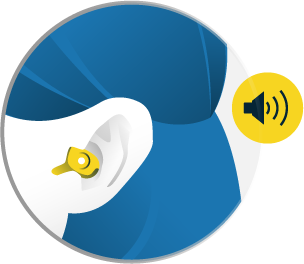
Ear Protection
Wind rushing past your ears when you ride can not only block out other noise but actually tire out your hearing and lead to fatigue. Getting a set of earplugs used to mean that you would not be able to hear the sound of traffic, but more advanced technology blocks out only the noise of the wind, and not the noise of the road.
-
Onboard Diagnostics
As the onboard diagnostics have improved in cars, so they have become accessible to motorcycles. You can now install features on your bike that provide real-time reports on tire-pressure and active suspension. These can provide useful early-warnings for potential structural issues with your motorcycle.
-
Eye Protection
The two main uses of eye protection are to prevent debris from hitting your eyes while you are riding and to prevent the sun from blinding you. In both cases, there are solid options available. The best combination option is specially-designed riding sunglasses, which comes with reinforced, shatter-resistant glass. You can also consider getting light-enhancing glasses if you regularly drive at dusk.
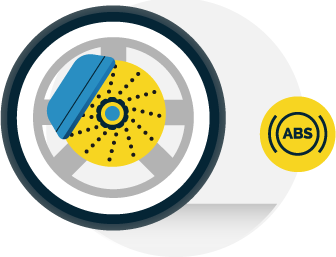
Anti-Lock Brakes
Statistics by the Motorcycle Legal Foundation found that anti-lock brakes reduced fatalities in crashes by 43%. Within the European Union, motorcycles over 125cc have to have anti-lock brakes fitted, and it’s becoming increasingly common in the United States for that to be the case too.
-
LED Lighting
One of the biggest dangers to motorcyclists is not being seen by other road users. LED lights can be fitted to your bike to offer greater visibility in both low light and night riding. You can also have helmets installed with LED lighting to announce your presence from even further away.
-
Stability Control
As with cars, the biggest cause of crashes is human error. Increasingly, motorcycles are being fitted with smart devices that can take over when the driver makes a mistake. Stability control intervenes when a rider is turning at too sharp of an angle and applies pressure to either the gas or the brake as necessary.

Three Wheels
Although a radical solution to the lack of safety provided by a motorcycle, adding an extra wheel is becoming increasingly common. Previously it was an aftermarket-only option, although manufacturers are now selling motorcycles with two wheels at the back to provide additional stability.
Maintenance
Taking care of your motorcycle is also important from a safety perspective. Aside from driver error, technical malfunctions are also a major source of crashes. Use the inspection checklist below to stay on top of your maintenance.
Damage & Corrosion
You should inspect your vehicle regularly for damage or corrosion. This is especially true if you’ve not used your motorcycle for a while, such as if your bike has been in storage over the winter. The three most important areas to check are the body, the tires, and the lines/cables.
Additionally, if you ever have a collision on your motorcycle, you should make an additional inspection of the vehicle and proceed with extreme caution when driving in the short-term. Collisions may cause structural damage that doesn’t show immediately.

Fluids and Leaks
You should regularly top up all of the fluids in the bike, checking carefully for leaks. Some companies sell special additives you can add to your fuel tank before the winter to prevent any corrosion. Similarly, when spring comes and it’s time to ride again, you can buy additives that help mitigate the damage of starting up again.
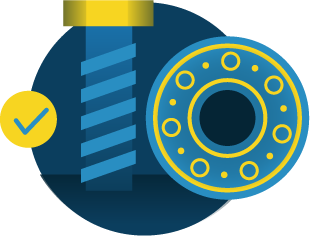
Check Bolts and Bearings
Once a month during the riding season you should do a full manual check of all the bolts and bearings. Additionally, if you feel additional vibrations when you ride you should also first check to see if the bolts and bearings are as tight as they should be.
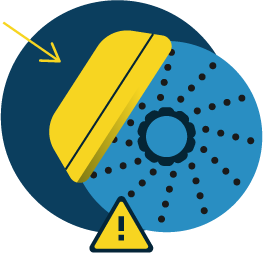
Brakes
Checking the brakes should be part of your pre-ride ritual every time. Move the bike forward slowly (you can walk it) and press the brakes. You should be able to bring the bike to a complete stop. If this doesn’t happen, your brakes are not safe to drive.
You should also check the brake cables at regular intervals. If either your brake pads or cables are not functioning properly, you should replace them immediately, and do not use your bike in the interim.
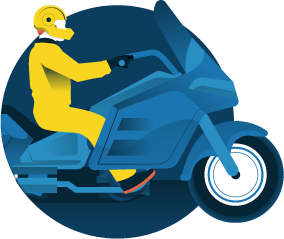
Test Drive
After you bring your bike out of storage for the spring, you should perform the above checks and then take the bike on a small test drive on a quiet area of road. This will help identify any issues that may have arisen without it being a major danger to other road users. Ideally, you should take a series of small test drives in advance of any long drive.

Lights and Bulbs
As with your brakes, you should check your lights every time you ride. Simply turn on the lights and manually inspect them. If they are not working, your bike is not roadworthy, and you need to replace the bulbs. If changing the bulb doesn’t work, then you should change the fuse.

You should also regularly (once a year) change out the warning light bulbs. This is an important safety feature that shouldn’t be ignored.
What this shows is that, while riding a motorcycle is unlikely to ever be safe, or as safe as driving in a car, it can certainly be made far safer. By planning ahead, and taking adequate preparation, you can avoid the typical pitfalls of new motorcycle riders, and have a safe experience on your motorcycle.


